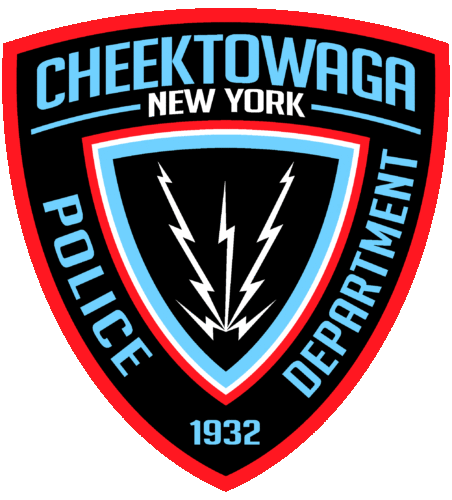NEIGHBORHOOD WATCH
NEIGHBORHOOD WATCH
The Neighborhood Watch Program has been alive and well in Cheektowaga long before the advent of community policing. It has long been recognized that police are not able to do everything alone and that citizens need to be involved to keep their neighborhoods safe. The Community Crime Prevention Office coordinates the formation of any new Neighborhood Watch Group and then works closely with the group to ensure continuity. The initial meeting explains what a watch group is and isn’t and what it can accomplish.
There are currently approximately forty (40) watch groups in the Town of Cheektowaga. Due to life’s busy pace, most do not have regularly scheduled meetings, but operate more along the lines of an informational network. In the event of a rash of incidents in an area, the police and watch personnel are quickly able to disseminate information on the incidents and suspects throughout the neighborhood. Organized neighborhoods have been effective in assisting the department in making arrests and solving crimes. Watch groups have also been instrumental in setting up local bicycle registration programs that have assisted the police in returning stolen bicycles.
Contact the Crime Resistance Unit at 716-897-7293 for monthly meeting schedule and location.
- What is Neighborhood Watch?
- Why Neighborhood Watch?
- How Do I Start a Neighborhood Watch Program?
- Maintaining a Neighborhood Watch Program
- Program Activities
- Reporting a Crime
- Suspect Description Form
- Vehicle Description Form
WHAT IS NEIGHBORHOOD WATCH?
Neighborhood Watch is a crime prevention program which enlists the active participation of citizens in cooperation with law enforcement to reduce crime in their communities. It involves:
Neighbors getting to know each other, taking the time to care about each other and working together in a program of mutual assistance.
Citizens being trained to recognize and report suspicious activities in their neighborhoods.
Crime prevention strategies such as home security, Operation Identification and others being implemented by citizens.
WHY NEIGHBORHOOD WATCH?
There can’t be a law enforcement officer on every corner, so citizen involvement is essential to combat crime. You and your neighbors are the ones who really know what is going on in your community. By cooperating with each other and the police, people can help fight crime in their community in the most effective way – before it begins!
Neighborhood Watch members place stickers in their windows and post Neighborhood watch signs on streets, warning criminals that they are in an active Neighborhood Watch Community, and that “neighbors are watching out for each other.
HOW DO I START A NEIGHBORHOOD WATCH PROGRAM?
Contact your local law enforcement agency
The Cheektowaga Police Department’s Crime Resistance Unit at 897-7293.
Explain that you would like to start a Neighborhood Watch group and ask for assistance.
Ask about crime conditions in your neighborhood.
Ask to have a law enforcement representative at your first meeting.
Talk to your neighbors.
Canvass your neighborhood for interest.
Discuss crime problems in your area, using the information you received from your law enforcement agency.
Briefly explain the value of the Neighborhood Watch program.
Ask about convenient times to schedule your first Neighborhood Watch meeting.
Be sure to mention that:
Neighborhood Watch does not require frequent meetings.
It does not ask that anyone take any personal risks to prevent crime.
Your neighborhood may be able to get Neighborhood Watch signs for your street.
Law enforcement will attend your meetings to answer questions about crime in your community and provide valuable information on how the police department works.
Neighborhood Watch leaves the responsibility for apprehending criminals where it belongs – with your law enforcement agency.
The first meeting
Ask your local law enforcement official to cover the following topics:
The law enforcement agency and its crime prevention programs.
The Neighborhood Watch program – that it is a cooperative effort between concerned citizens and the law enforcement agency.
The specific crime problems in your area.
How to obtain Neighborhood Watch signs.
Effective crime prevention techniques for home and neighborhood.
Other crime prevention programs available in your community.
How citizens can become law enforcement’s “eyes and ears” and help them in their investigation of crimes.
How to report a crime: what to look for, how to describe the person, vehicle or activity, and other information such as location or names, that will help solve the crime.
Maintaining a Neighborhood Watch Program
Now that your Neighborhood Watch network is established, be sure that everyone understands and observed the following guidelines:
Be alert to unusual or suspicious behavior in your neighborhood. Call the police if warranted. Write down descriptions of the person(s) involved and license numbers of any vehicles involved.
Tell a trusted neighbor if your house will be unoccupied for an extended period. Tell him or her how to reach you in an emergency. You can also call the police department and request a vacation check of your residence while you are away.
Look after your neighbors’ homes when they are away, and ask them to look after yours. This includes picking up the mail or newspapers and putting back the garbage cans or recycling bins. Don’t leave signals that say, “no one is home”.
Attend Neighborhood Watch meetings often. Your local crime prevention officer will teach you about local crime trends and what you can do about them.
Above all, get involved. It is the most effective way to reduce or prevent crime and make your neighborhood safe.
Program Activities
Home Security
Ask your law enforcement agency for help with “home security surveys for individual residences.
Invite an officer to speak to your Neighborhood Watch group about home security.
Learn how to secure your homes with effective door and window locks, adequate exterior lighting, security habits and landscaping.
Operation Identification
The Operation Identification program encourages homeowners to mark their property to make it easier to identify it if stolen.
Purchase an engraver so that everyone in your Neighborhood Watch group can mark items such as television sets, computers and stereos.
Encourage residents to make a list of their firearms, personal computers, and other electronic equipment along with their serial and model numbers. Keep the list is a safe place.
Photograph items, which can’t be marked, such as jewelry.
Block Parents
Develop a block parent system.
Identify homes where children know they can go when they need assistance and their own parents are not home.
Place signs in the windows of selected houses so that children can find them easily.
Ask parent to introduce their children to these block parents before emergencies arise.
Bicycle Safety
Hold a bicycle rodeo within your neighborhood. Conclude the event with a talk on bicycle security and safety.
Encourage everyone to register their bicycles with the Cheektowaga Police Department.
Vehicle Description Form
License Plate: Number State
Make
Model
Year
Body style: (2 door, 4 door, van, convertible)
Identifying characteristics: hub caps, wheels, dents, scratches, bumper stickers, decals.
Reporting a Crime
Call upon law enforcement experts and community leaders to participate in neighborhood meetings or workshops on a variety of topics. This includes:
- Personal safety tips
- Bicycle, auto or boat theft prevention
- Child abuse – recognition and prevention
- Alcohol and other drug use and abuse
- Drug houses and clandestine laboratories
- School safety
- Child safety
- Senior citizens – con games, personal safety and elder abuse
- Criminal justice system – police, courts and corrections
When crime occurs – Report it
(If you: Hear it, See it, Report it)
Sound easy? Unfortunately, only about half of all crimes are ever reported. Too bad, because the police can’t do anything if they don’t know what happened. Eyewitness information is the key to solving many crimes. Remember these tips when reporting crime to your law enforcement agency:
Call the police immediately. A five-minute delay can reduce the chance of ever catching the criminal.
Tell the police as much as you can. No fact is too trivial. In many cases, it is what the victims and witnesses tell the police about the criminal that results in an arrest. The police can use answers to as many of these questions as possible. Please remember that wrong information is worse than no information at all.
- What occurred?
- When did it occur?
- Where did it occur?
- How many suspects were there?
- What did they do?
- What did they say?
- What did they take?
- Which way did they go?
- Were there any other witnesses? What are their names, addresses, or phone numbers?
- Is there any other information which you feel is important?
- Can you describe the suspect(s)?
- Can you describe their vehicle? (Did you obtain a license plate number?)
Even an anonymous tip is better than nothing.
Once you have reported the crime, stick with it. It pays to prosecute.
Suspect Description Form
Sex:
Race:
Age:
Height:
Weight:
Hair:
Color Length Type Style Sideburns
Eyes:
Color
Glasses:
Typeface:
Complexion:
Mustache/Beard:
Ski Mask:
Stocking Mask:
Other:
Tattoos Amputation Scars/Marks Speech/Accent Distinguishable limp/gait Bag/backpack etc.
Clothing:
Cap/hat Shirt/blouse Tie Pants Skirt Dress Shoes Stockings Gloves Jewelry Purse
Weapon:
Handgun Knife Shotgun


CHEEKTOWAGA POLICE DEPARTMENT
3223 Union Road
Cheektowaga, New York 14227
Phone: (716) 686-3500
911 FOR EMERGENCIES

CHIEF BRIAN F COONS
FOLLOW US ON SOCIAL MEDIA
Copyright © 2023
Cheektowaga Police Department
All rights reserved.
